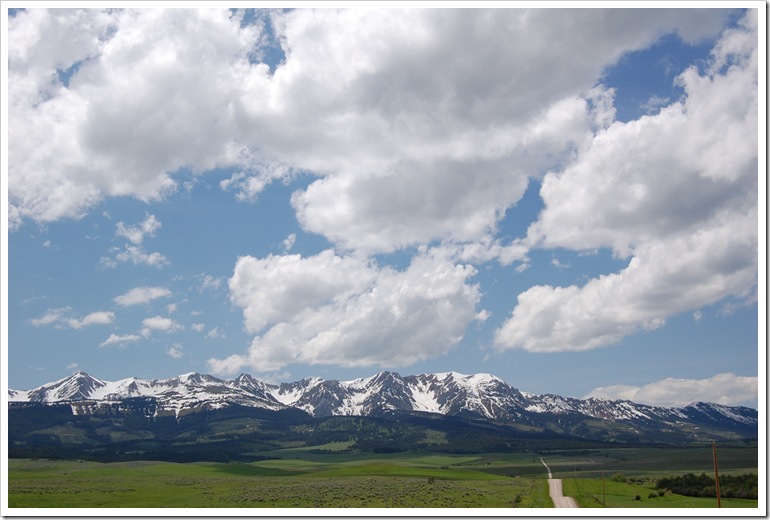WELCOME TO BOZEMAN
Bozeman has so much great stuff to offer! It would be nearly impossible to get it all listed in one place! Gallatin Valley and its surrounding areas set the landscape for outdoor activities changing with the seasons. Bozeman also caters to culture, dining and art interests as well. These are just our suggestions-- keep your eyes open and explore the beauty and splendor that is Bozeman, Montana. Excitement awaits around every bend.
A little bit of history...
Named after John M. Bozeman, founder of the Bozeman Trail and key founder of the town in August 1854. Incorporated in April 1883, the city later transitioned to its current city manager/city commission form of government in January 1922. Bozeman was elected an All-America City in 2001 by the National Civic League. A college town, Bozeman is home to Montana State University. The local newspaper is the Bozeman Daily Chronicle and the city is served by the Bozeman Yellowstone International Airport.
William Clark visited the area in July 1806 as he traveled east from Three Forks along the Gallatin River. The party camped 3 miles (4.8 km) east of what is now Bozeman, at the mouth of Kelly Canyon. The journal entries from Clark's party briefly describe the future city's location
In 1863 John Bozeman, along with a partner named John Jacobs, opened the Bozeman Trail, a new northern trail off the Oregon Trail leading to the mining town of Virginia City through the Gallatin Valley and the future location of the city of Bozeman.
John Bozeman, with Daniel Rouse and William Beall platted the town in August 1864, stating "standing right in the gate of the mountains ready to swallow up all tenderfeet that would reach the territory from the east, with their golden fleeces to be taken care of" Red Cloud's War closed the Bozeman Trail in 1868, but the town's fertile land attracted permanent settlers.
In 1892 the U.S. Bureau of Fisheries established a fish hatchery on Bridger Creek at the entrance to Bridger Canyon. The fourth oldest fish hatchery in the United States, the facility ceased to be primarily a hatchery in 1966 and became the U.S. Fish and Wildlife Service's Bozeman National Fish Hatchery, later a fish technology and fish health center. The Center receives approximately 5000 visitors a year observing biologists working on diet testing, feed manufacturing technology, fish diseases, brood stock development and improvement of water quality.
Montana State University - Bozeman was established in 1893 as the state's land-grant college, then named the Agricultural College of the State of Montana. By the 1920s, the institution was known as Montana State College, and in 1965 it became Montana State University.
Bozeman receives a steady influx of new residents and visitors in part due to its plentiful recreational activities such as fly fishing, hiking, whitewater kayaking, and mountain climbing. Additionally, Bozeman is a gateway community through which visitors pass on the way to Yellowstone National Park and its abundant wildlife and thermal features. The showcasing of spectacular scenery and the western way of life the area received from films set nearby, such as A River Runs Through It and The Horse Whisperer, have also served to draw people to the area.
William Clark visited the area in July 1806 as he traveled east from Three Forks along the Gallatin River. The party camped 3 miles (4.8 km) east of what is now Bozeman, at the mouth of Kelly Canyon. The journal entries from Clark's party briefly describe the future city's location
In 1863 John Bozeman, along with a partner named John Jacobs, opened the Bozeman Trail, a new northern trail off the Oregon Trail leading to the mining town of Virginia City through the Gallatin Valley and the future location of the city of Bozeman.
John Bozeman, with Daniel Rouse and William Beall platted the town in August 1864, stating "standing right in the gate of the mountains ready to swallow up all tenderfeet that would reach the territory from the east, with their golden fleeces to be taken care of" Red Cloud's War closed the Bozeman Trail in 1868, but the town's fertile land attracted permanent settlers.
In 1892 the U.S. Bureau of Fisheries established a fish hatchery on Bridger Creek at the entrance to Bridger Canyon. The fourth oldest fish hatchery in the United States, the facility ceased to be primarily a hatchery in 1966 and became the U.S. Fish and Wildlife Service's Bozeman National Fish Hatchery, later a fish technology and fish health center. The Center receives approximately 5000 visitors a year observing biologists working on diet testing, feed manufacturing technology, fish diseases, brood stock development and improvement of water quality.
Montana State University - Bozeman was established in 1893 as the state's land-grant college, then named the Agricultural College of the State of Montana. By the 1920s, the institution was known as Montana State College, and in 1965 it became Montana State University.
Bozeman receives a steady influx of new residents and visitors in part due to its plentiful recreational activities such as fly fishing, hiking, whitewater kayaking, and mountain climbing. Additionally, Bozeman is a gateway community through which visitors pass on the way to Yellowstone National Park and its abundant wildlife and thermal features. The showcasing of spectacular scenery and the western way of life the area received from films set nearby, such as A River Runs Through It and The Horse Whisperer, have also served to draw people to the area.








